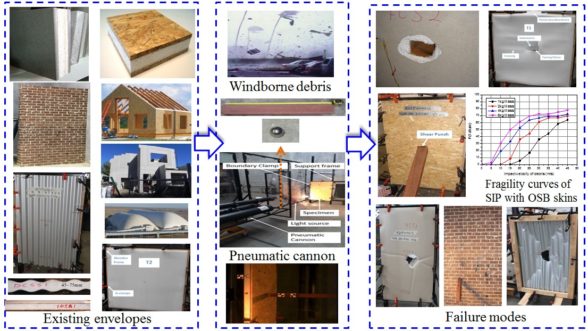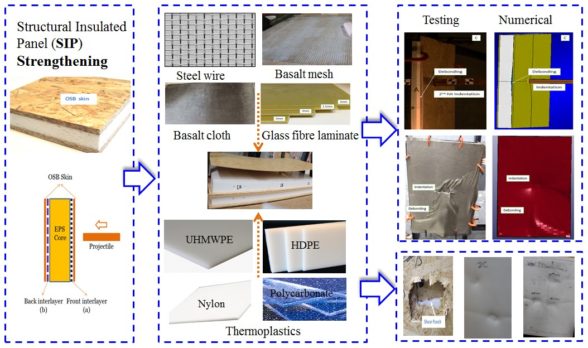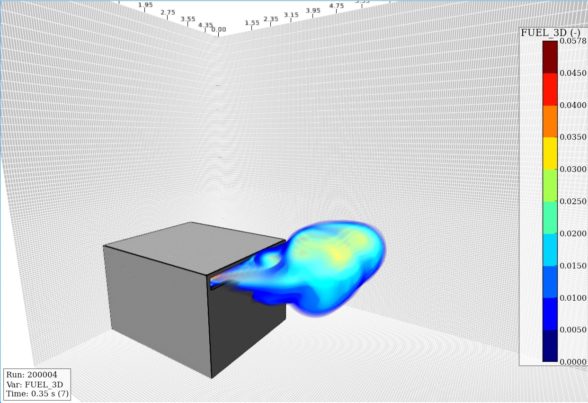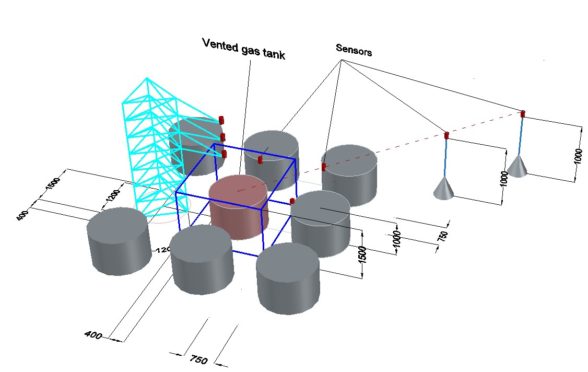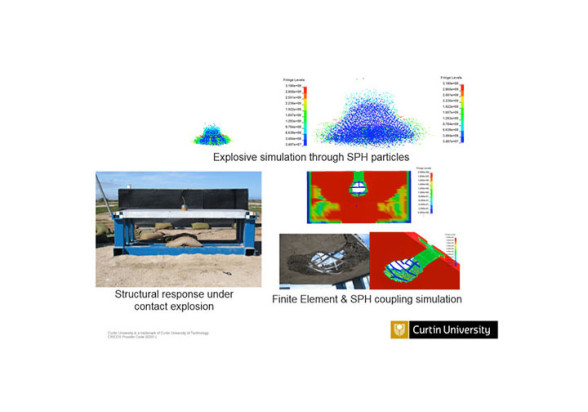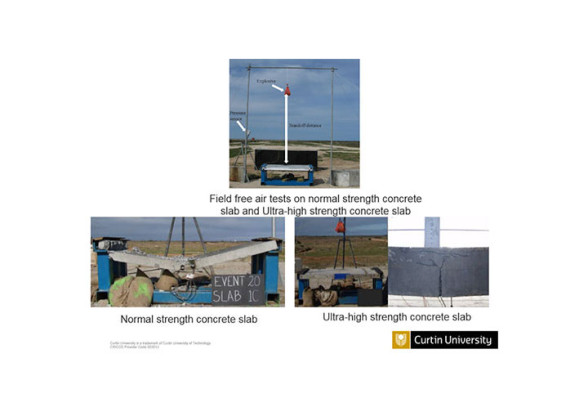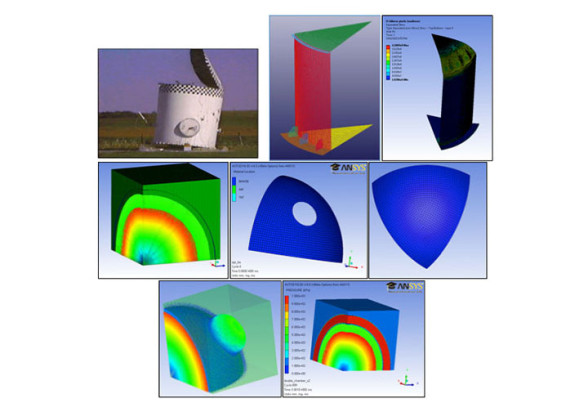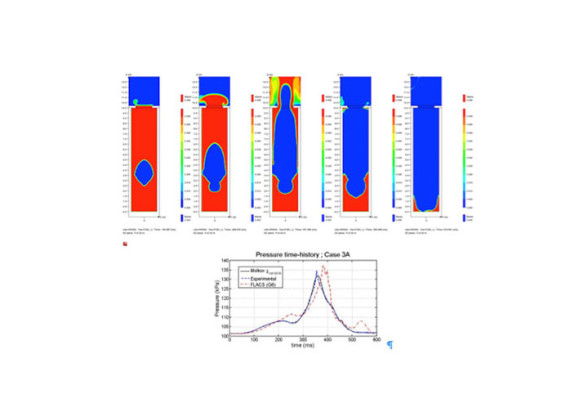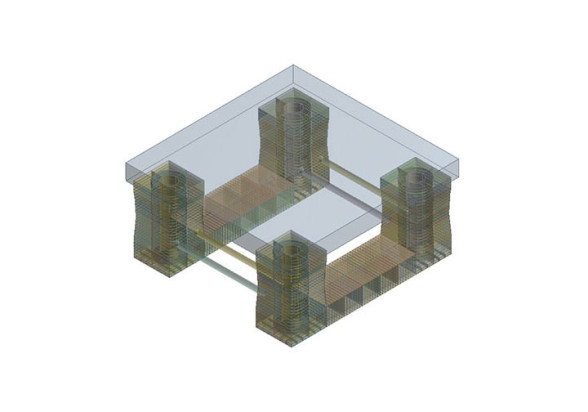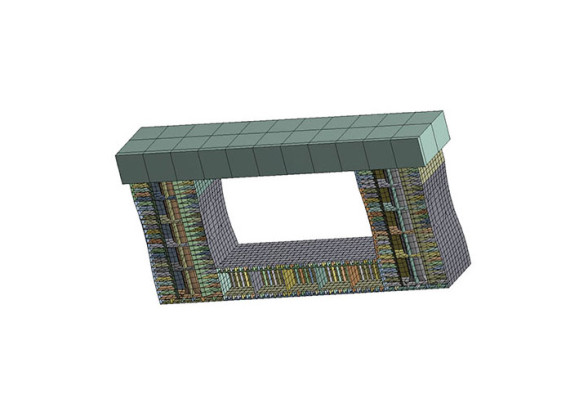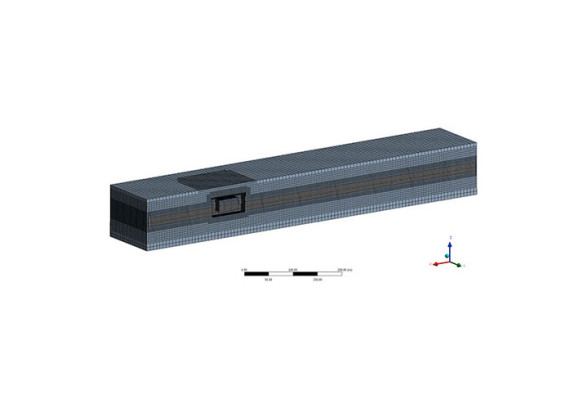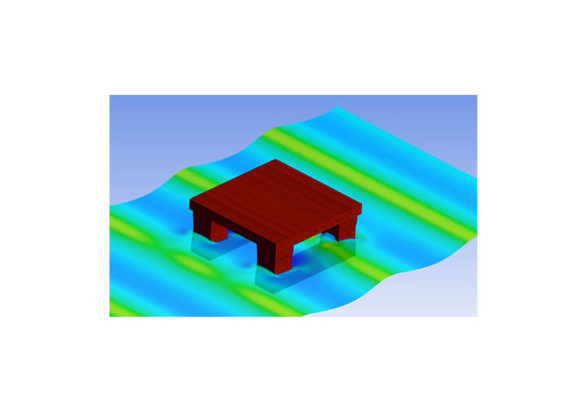Research
Earthquake engineering
Modelling and simulation of spatially varying ground motions at sites with varying conditions

Pounding damage between adjacent bridge components
Researcher: Dr Kaiming Bi

Progressive collapse of bridge structures
Researcher: Dr Kaiming Bi

Using sandwich pipe for pipeline vibration control
Researcher: Dr Kaiming Bi

Seismic pounding of adjacent bridge structures and application of smart materials for seismic protection
Researcher: Mr Bipin Shrestha
He is working on his PhD thesis entitled “Numerical and experiment study on pounding damage of adjacent bridge structures to spatially varying ground motions and its mitigation”. He conducted large scale experiments on adjacent bridge frames to identify the effects of pounding on the response of the frames subjected to spatially varying ground motions. His research also involves numerical and experimental investigation on effectiveness of using pounding mitigation devices, such as restrainers, rubber bumpers, and friction dampers. He is also investigating on application of super elastic Shape Memory Alloy (SMA wires/bars on bridge joints and piers to reduce residual joint opening and residual pier deformations.

Seismic performance of reinforced concrete (RC frame buildings with infill wall considering soil-structure interaction effect)
Researcher: Mr Kinzang Thinley
This research is geared towards examining the seismic performance of masonry infilled RC frame buildings considering both infill-frame interaction and soil structure interaction. A nonlinear analysis and performance assessment software ‘Perform 3D’ and a fibre-based finite element program ‘Seismostrut’ are employed for the numerical simulation. It is anticipated that this research would be highly beneficial to the engineering fraternities especially in the underdeveloped and developing countries where masonry infill RC frame buildings are highly prevalent.

Three-dimensional finite element modelling of a bridge structure with rocking piers
Researcher: Ms Emma Leitner
The objective of the present research includes the development and validation of a three-dimensional finite element model of a precast concrete bridge structure undergoing cyclic loading. The bridge pier-foundation interface is unfixed, allowing the structure to develop a rocking mechanism as a form of passive isolation against earthquake loading. Ductility and strength demands are thus reduced, limiting damage and residual displacements of the structure. Validation is performed against existing experimental data, after which variations of the model may be utilised. These variations include exploring the feasibility of additional energy dissipation capacity in rocking systems, extending the model to a full bridge structure under seismic loading, and investigating the effects of pounding and spatial variation whilst utilising the rocking system.

Blast and Impact Engineering
Strengthening and retrofitting of existing structures with fibre reinforced polymer
Researcher: Dr Thong Pham
Recent global terrorism activities and threats imposed prominent danger to the public infrastructures, and thus impact resistance design of structures have been attracted the research society. Fiber reinforced polymer (FRP) has been commonly used in the field of civil engineering for a few decays. This material can be utilized in improving the impact resistance of structures. It has been used in strengthening or retrofitting existing structures, or building new structures ranging from beams, slabs, columns, to walls. The use of FRP has been shown to increase the strength, stiffness, and ductility of strengthened structures. This use has now become popular worldwide because of the superior properties of FRP materials, which have high strength to weight ratios and are corrosion free. The understanding of structures strengthened with FRP under static loads has been comprehensively studied and presented in the literature. However, studies about dynamic responses of structures strengthened with FRP are limited. This project thus investigates the impact resistance of concrete structures and proposes new strengthening methods to improve their impact resistance.

Response and vulnerability modelling of structural facades and partition walls to resist windborne debris impact (Funded by CSIRO Flagship project:Climate Adaptation Engineering for Extreme Events Cluster)
Key Researchers: Dr Wensu Chen; Mr. Qingfei Meng
This project is to study of the performances of existing structural envelopes (e.g. structural insulated panels, fabric and masonry wall) against windborne debris impacts. The testing results can be used for the assessment of the application feasibility of different structural envelopes in cyclonic or non-cyclonic area. Fragility curves of structural panels, accounting for various uncertainties and random variations of the panel and debris parameters, are generated and used in loss predictions of building structures in extreme wind events. Possible strengthening techniques have also been investigated to increase the impact resistance capacities of the commonly used structural panels.
Development of lightweight composite/sandwich structures against blast and impact loads (Funded by ARC-DECRA)
Key Researchers: Dr Wensu Chen; Mr. Zhejian Li

Basalt FRP strengthening technique (Funded by ARC-Linkage project)
Key Researchers: Dr Wensu Chen; A/Prof. Li Chen; Dr. Thong Pham; Mr. Zhan Li; Mr. Cheng Yuan

Mechanical behaviour of building materials (polymeric, basalt fibre, fibre cement, thermoplastic, metallic etc. under quasi-static, medium and high strain rate conditions
Researcher: Dr Wensu Chen

Blast and impact resistant window systems
Researcher: Dr Xihong Zhang
Develop design guidelines for blast and impact resistant windows, develop numerical methods to predict window failure and fragmentation, and investigate the effectiveness of various window strengthening measures for life and property protection.

Development of precast concrete segmental columns to resist dynamic loads
Researcher: Dr Xihong Zhang
Using precast segmental concrete columns in structures improves the construction efficiency and site safety, leads to better construction quality control, reduces the construction cost, site disruption and environmental impacts. The performance of segmental columns to resist earthquake and blast loads is not well studied yet. As a structure during its service life might subject to such loads, understanding its resistance capacities is essential for structural safety. This project will perform experimental and numerical investigations to study the performance of precast segmental concrete column under earthquake and blast loads, and develop analytical and design methods for applications of such columns in building and bridge structures.

Laboratory testing of dynamic material properties of various materials, including ceramics (glass, polymers (PVB, SGP, FRP)
Researcher: Dr Xihong Zhang

Larger-scale vented gas explosion
This research is focusing on the prediction of internal and external pressures for vented gas-air explosions in cylindrical tanks. So far, a series of experimental tests have been carried out along with corresponding CFD simulations. A simplified correlation has been derived to provide a more accurate and faster way than the up-to-date industrial standard- NFPA-68 to estimate the peak overpressure of a vented explosion.
Modelling and simulation of concrete structure under blast loads
Researcher: Dr Jun Li, Visiting Research Fellow, University of Adelaide

Field tests on concrete structures to blast loads
Researcher: Dr Jun Li, Visiting Research Fellow, University of Adelaide
Development of ultra-high performance concrete for protective purposes
Researcher: Dr Jun Li, Visiting Research Fellow, University of Adelaide

Development of fuel storage tank with frangible roof to resist accidental explosion load
Researcher: Mr Francisco J. Hernandez P.
Investigation of fully and partially confined explosions, including High Explosive (HE detonations and fuel/air deflagrations. The main research objective is to study the frangible behaviour of roofs installed on fuel storage tanks in order to mitigate damage caused by accidental gas deflagrations. That is, the frangible roof provides a ventilation which is utilized to reduce the explosion load. As part of this project, a set of field blast tests is planned. As a secondary aim, Francisco is also investigating partially confined chambers subjected to internal HE detonations.
Ship impact with fixed offshore platforms
Researcher: Dr Joao Travanca
Common accidents associated with offshore platforms are fire, explosion and ship impact. Despite significant consequences such accidents might impose on structures and society, the design and analysis of platform structure response to such accidental loads, in particular the ship impact load, is based on oversimplified and highly idealized approaches. These simplifications may lead to inaccurate predictions of offshore platform response and thus inaccurate designs.
By building and calibrating detailed real scale FE models of ships and offshore facilities, the nonlinear structural response, energy dissipation, impact force, and deformation of both the platform and ship structures under high energy impact can be assessed more accurately. Such advanced structural analyses are fundamental to the development of consistent simplified methods and/or hand calculations that can be easily used in engineering practice.

Mechanical properties of conventional and innovative construction materials under static and high-strain-rate loadings, behaviour of structures under extreme loadings
Researcher: Dr. Yifei Hao
Vibration control of offshore platforms
Researcher: Dr Joao Travanca
The platform response to wave loading is tested considering passive vibration isolation systems.
Structural Health Monitoring
Development and application of relative displacement sensors for structural health monitoring
Researcher: Dr Jun Li, Curtin University

Composite bridge condition assessment
Researcher: Dr Jun Li, Curtin University

Damage identification of bridges under moving loads
Dr Jun Li, Curtin University

Impedance based SHM
Researcher: Mr. Xingyu Fan
Developing new data processing methods to identify and quantify the structural damage based on the EMI technology.


